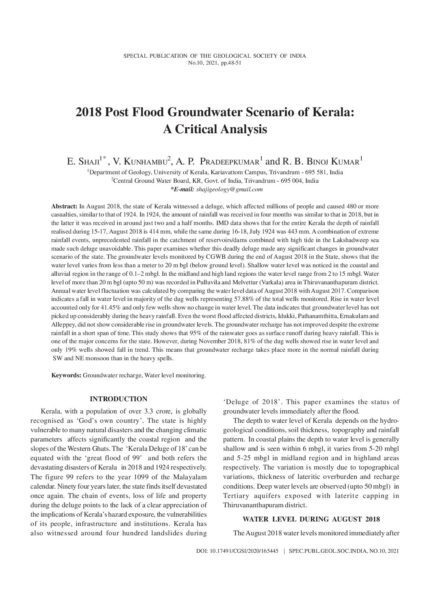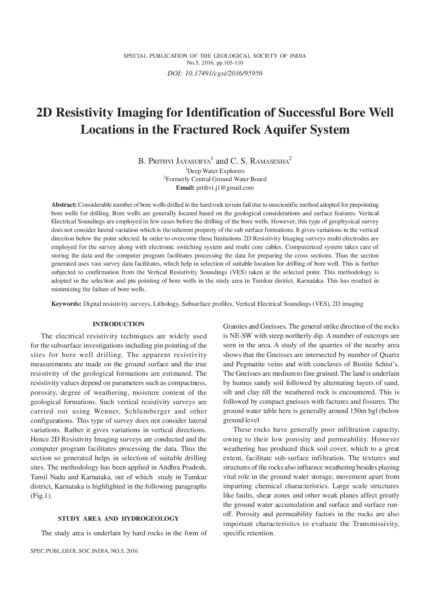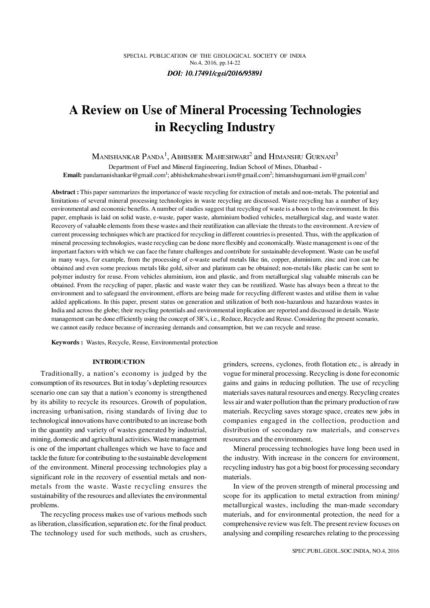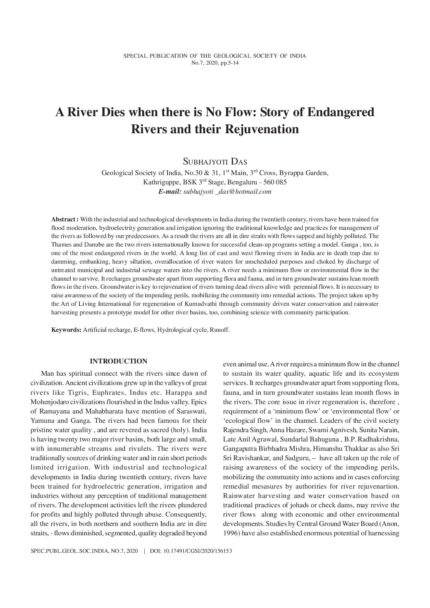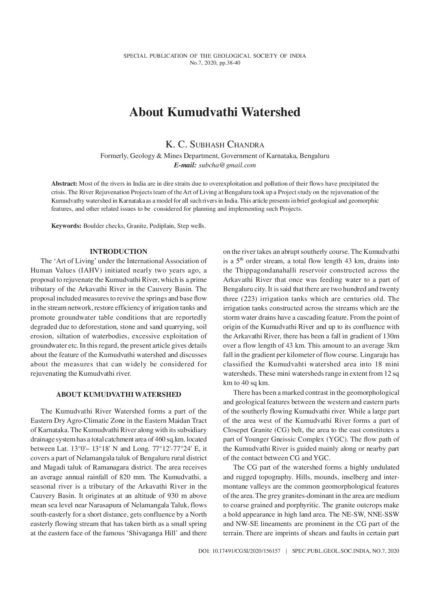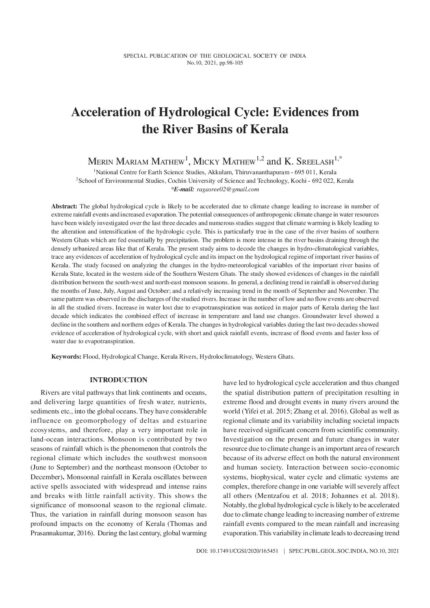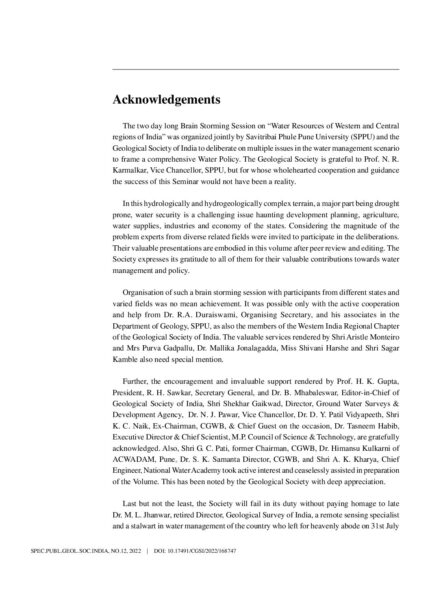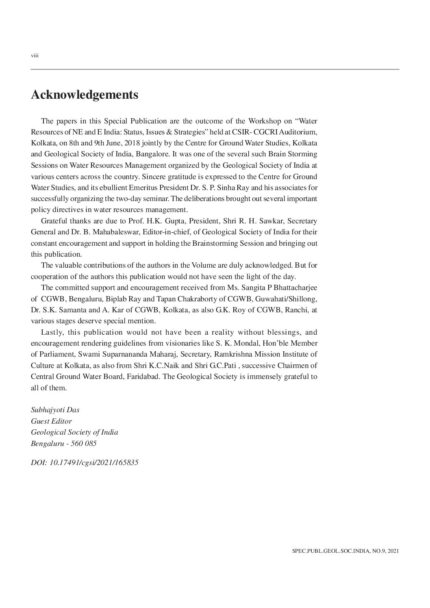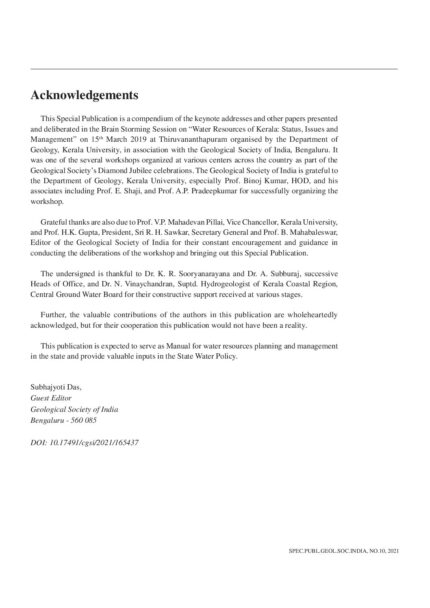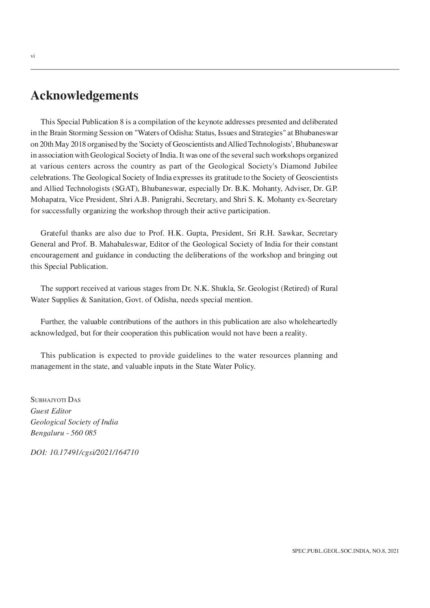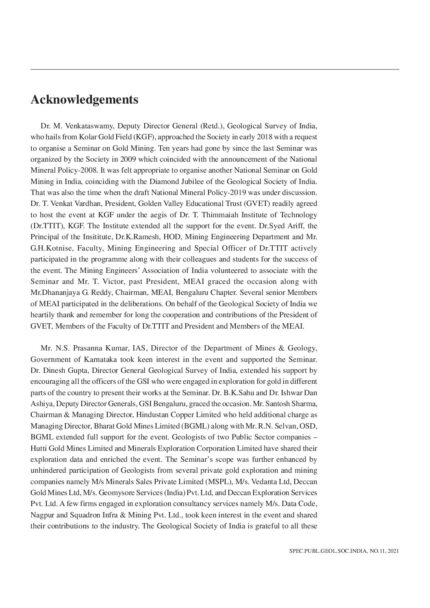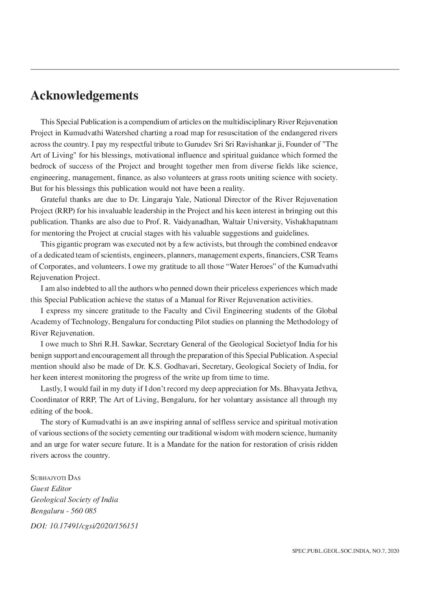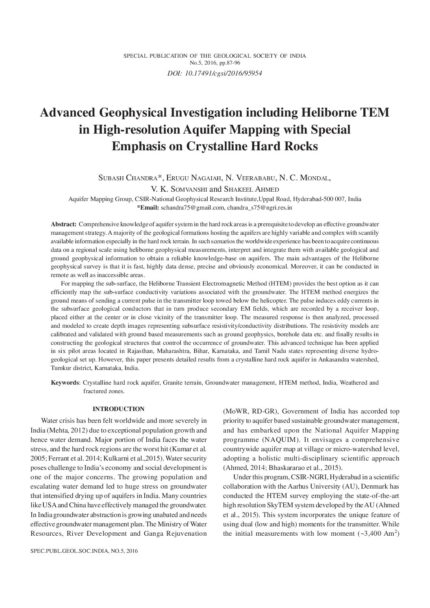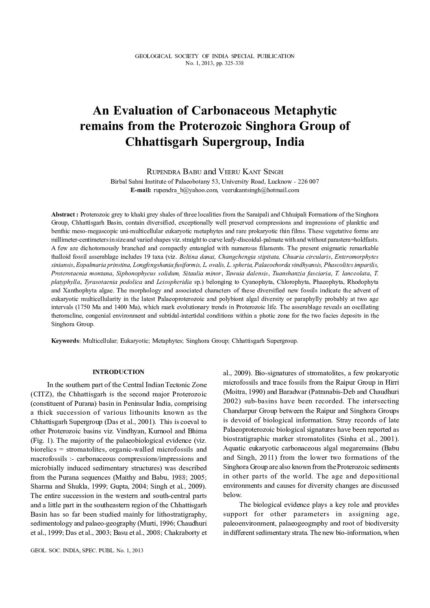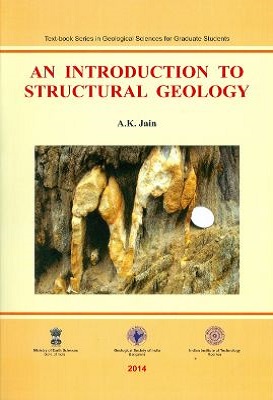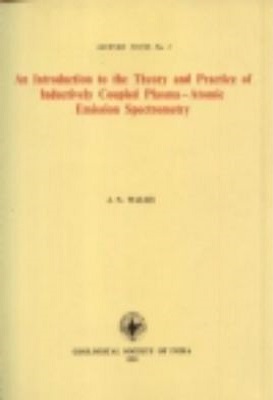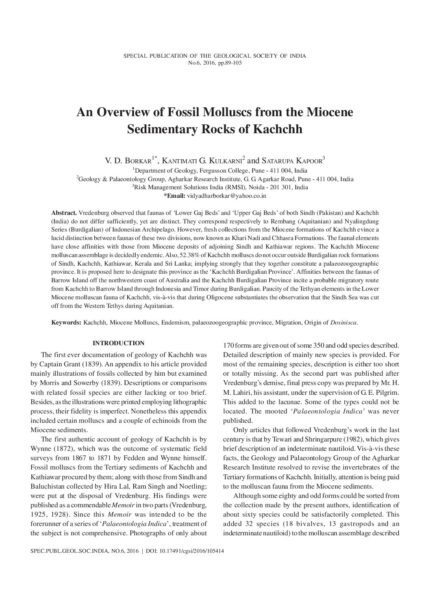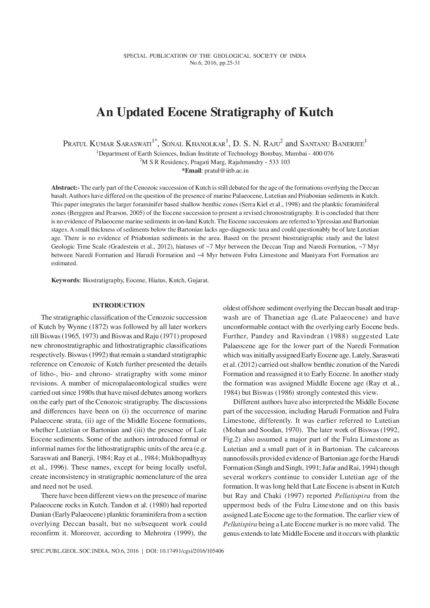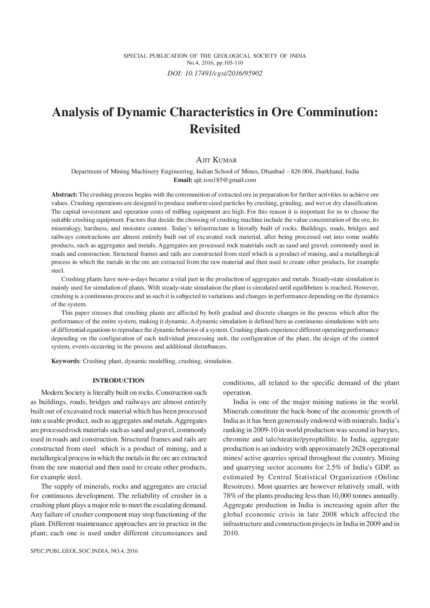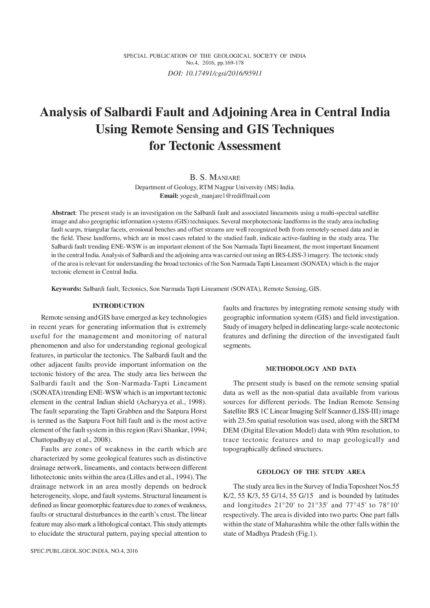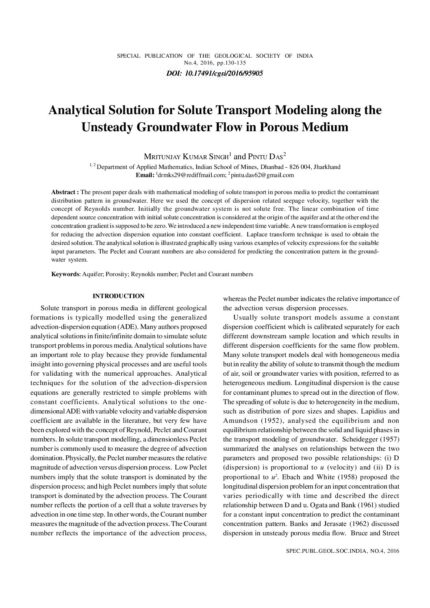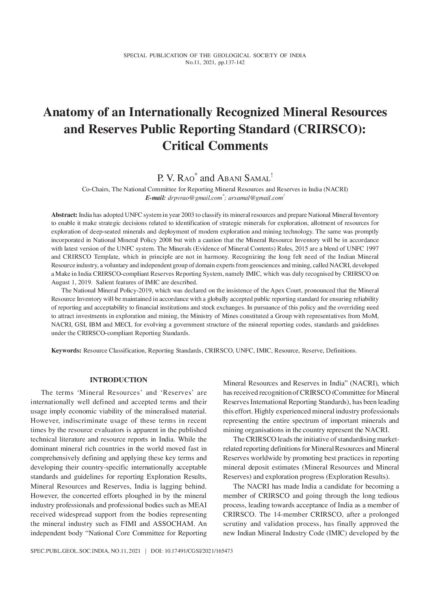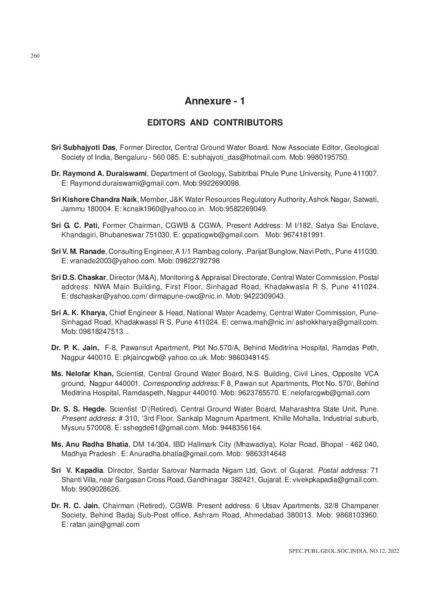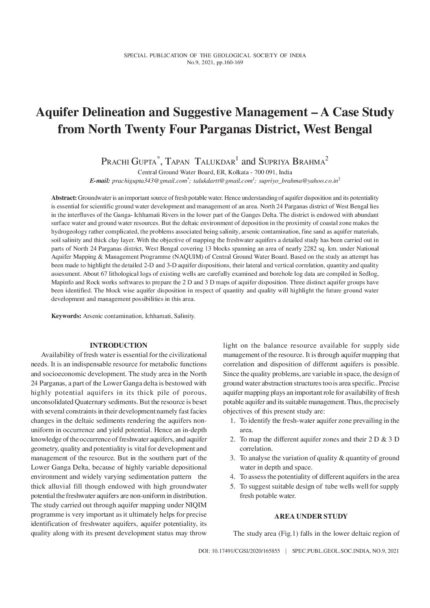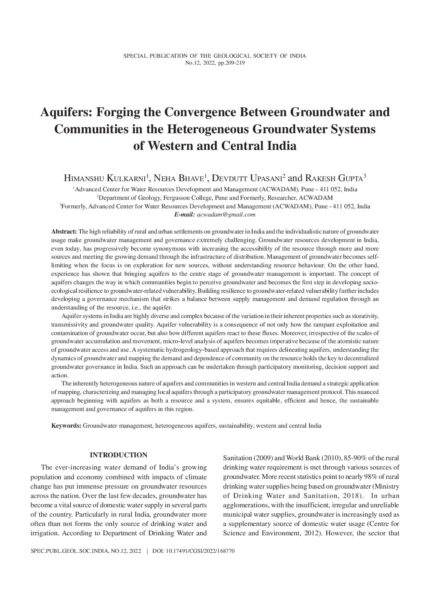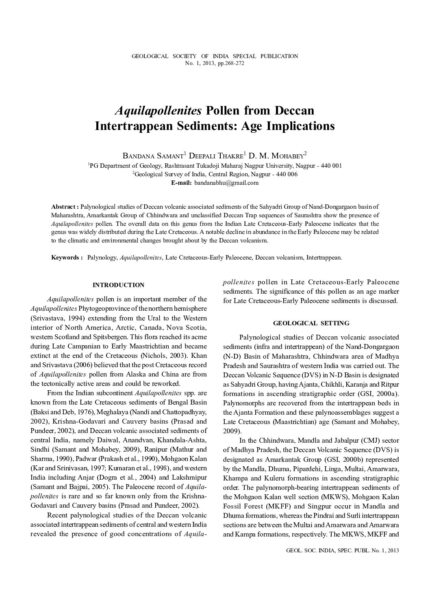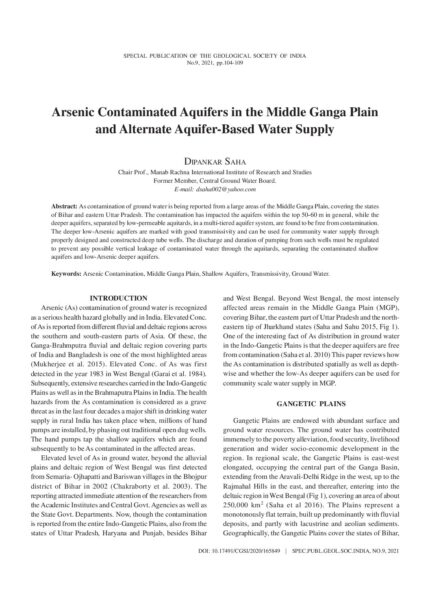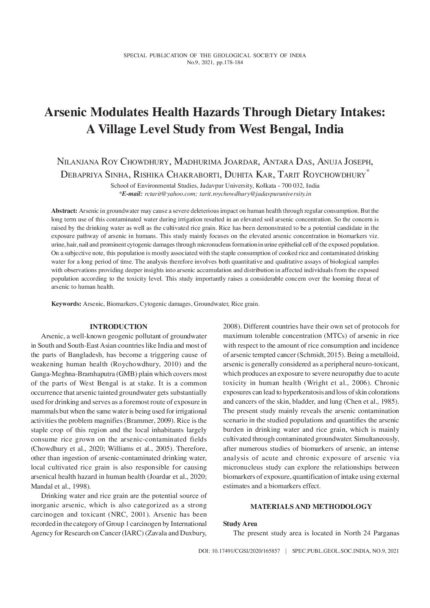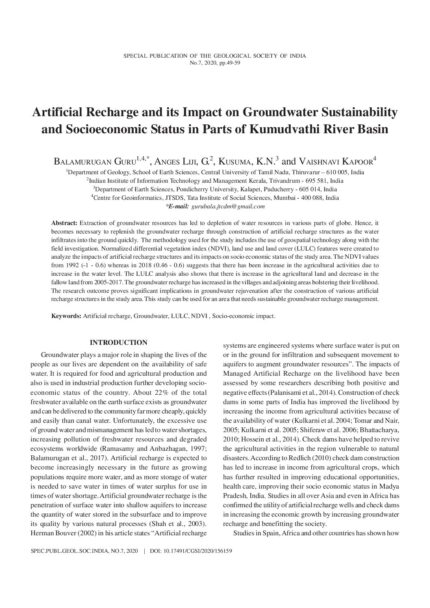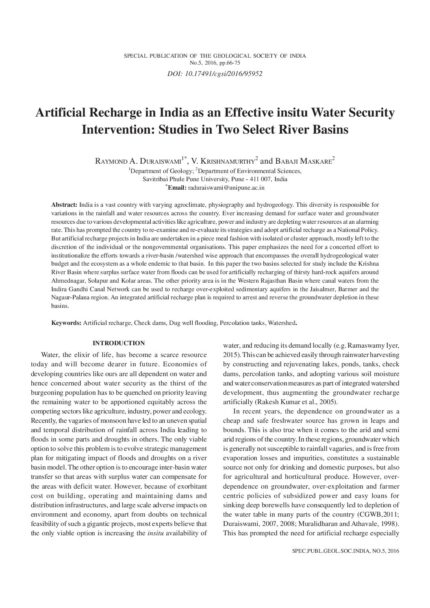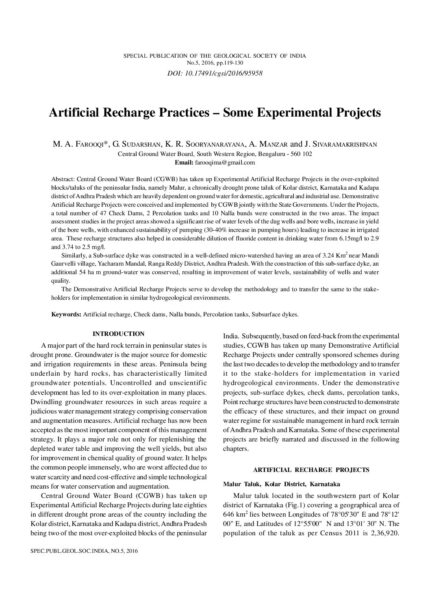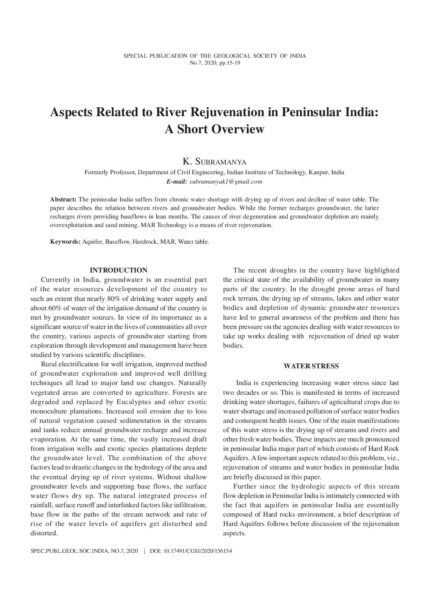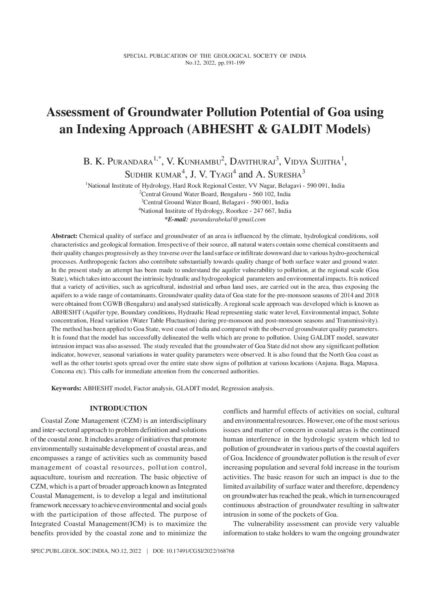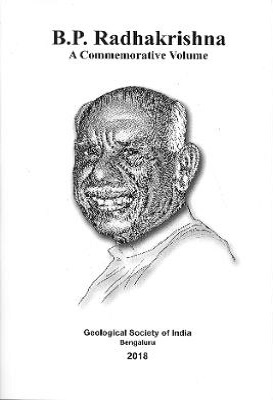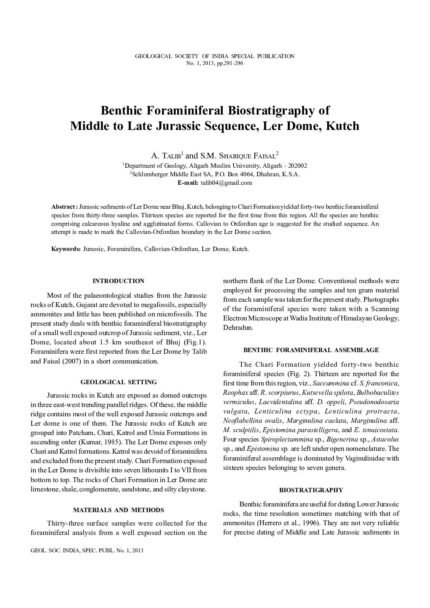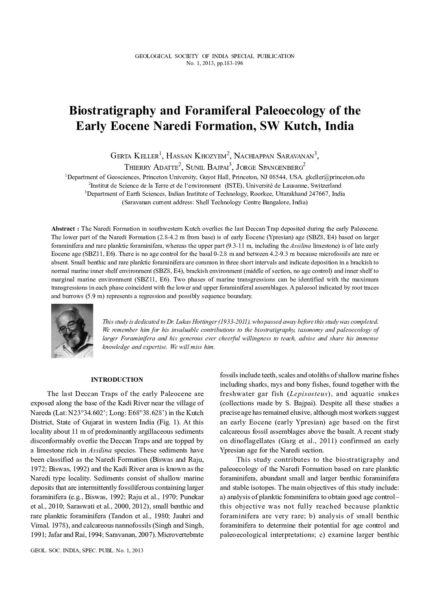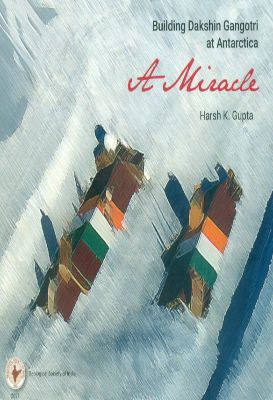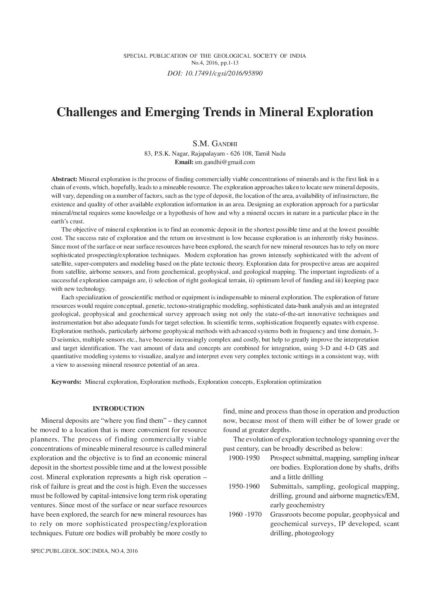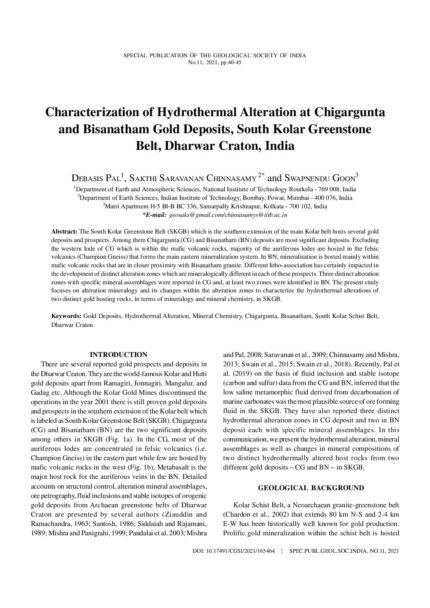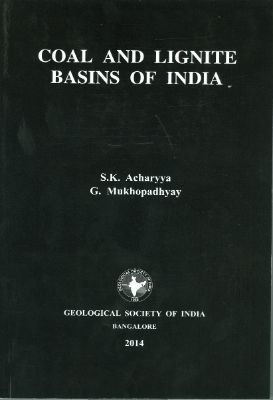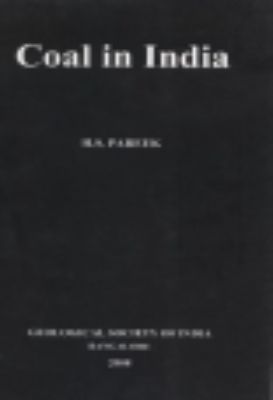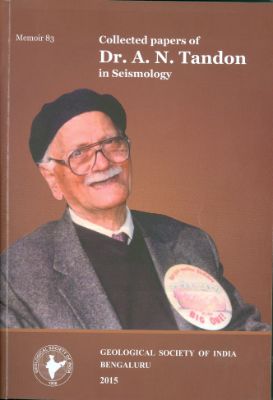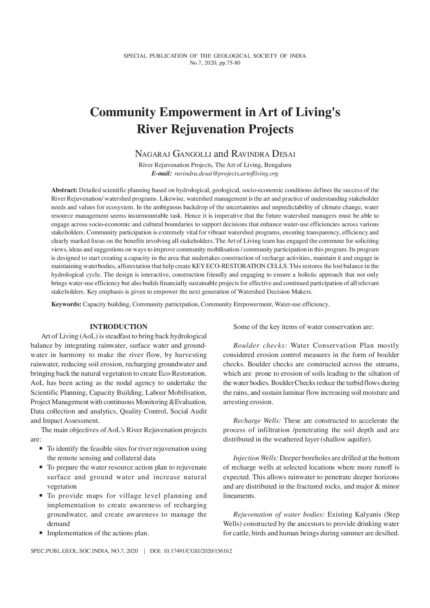Publications
2018 Post Flood Groundwater Scenario of Kerala: A Critical Analysis
2D Resistivity Imaging for Identification of Successful Bore Well Locations in the Fractured Rock Aquifer System
A River Dies when there is No Flow: Story of Endangered Rivers and their Rejuvenation
Acceleration of Hydrological Cycle: Evidences from the River Basins of Kerala
Advanced Geophysical Investigation including Heliborne TEM in High-Resolution Aquifer Mapping with Special Emphasis on Crystalline Hard Rocks
An Evaluation of Carbonaceous Metaphytic remains from the Proterozoic Singhora Group of Chhattisgarh Supergroup, India
An Overview of Fossil Molluscs from the Miocene Sedimentary Rocks of Kachchh
An Updated Eocene Stratigraphy of Kutch
Analysis of Dynamic Characteristics in Ore Comminution:Revisited
Analysis of Salbardi Fault and Adjoining Area in Central India Using Remote Sensing and GIS Techniques for Tectonic Assessment
Analytical Solution for Solute Transport Modeling along the Unsteady Groundwater Flow in Porous Medium
Anatomy of an Internationally Recognized Mineral Resources and Reserves Public Reporting Standard (CRIRSCO): Critical Comments
Aquifer Delineation and Suggestive Management ? A Case Study from North Twenty Four Parganas District, West Bengal
Aquifers: Forging the Convergence Between Groundwater and Communities in the Heterogeneous Groundwater Systems of Western and Central India
Aquilapollenites Pollen from Deccan Intertrappean Sediments: Age Implications
Arsenic Contaminated Aquifers in the Middle Ganga Plain and Alternate Aquifer-Based Water Supply
Arsenic Modulates Health Hazards Through Dietary Intakes: A Village Level Study from West Bengal, India
Artificial Recharge and its Impact on Groundwater Sustainability and Socioeconomic Status in Parts of Kumudvathi River Basin
Artificial Recharge in India as an Effective insitu Water Security Intervention: Studies in Two Select River Basins
Aspects Related to River Rejuvenation in Peninsular India: A Short Overview
Assessing the Environmental Flows for the Transboundary River Ichamati
Assessment of Groundwater Pollution Potential of Goa using an Indexing Approach (Abhesht & Galdit Models)
B.P. Radhakrishna A Commemorative Volume
The volume was brought out to commemorate the birth centenary of Dr. B.P. Radhakrishna, former Director of Department of Mines and Geology, President of the Geological Society of India and a doyen of Indian geology. It contains selected 25 landmark contributions spanning over the period from 1952 to 2008 which had significant bearing on the then existing knowledge, published in Journal of Geological Society of India and various other Journals. The papers are presented under four sections: 1. Archaean History of the Earth, 2. Geomorphological Studies, 3. Mineral Resources Development, and???? 4. Water, Environment and Ecology; each section prefaced with editorial comments by Dr. R. Srinivasan, Prof. R. Vaidyanadhan, Dr. M.S. Rao and Mr. Subhajyothi Das, respectively.

